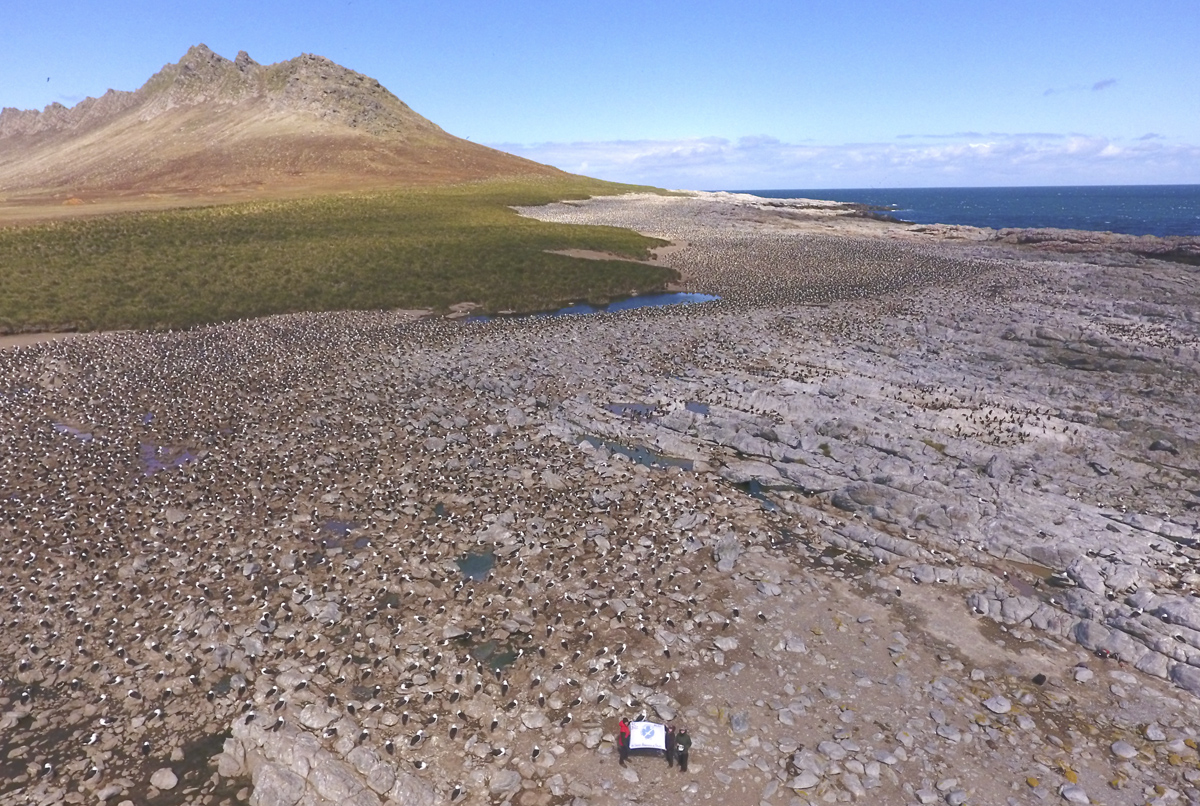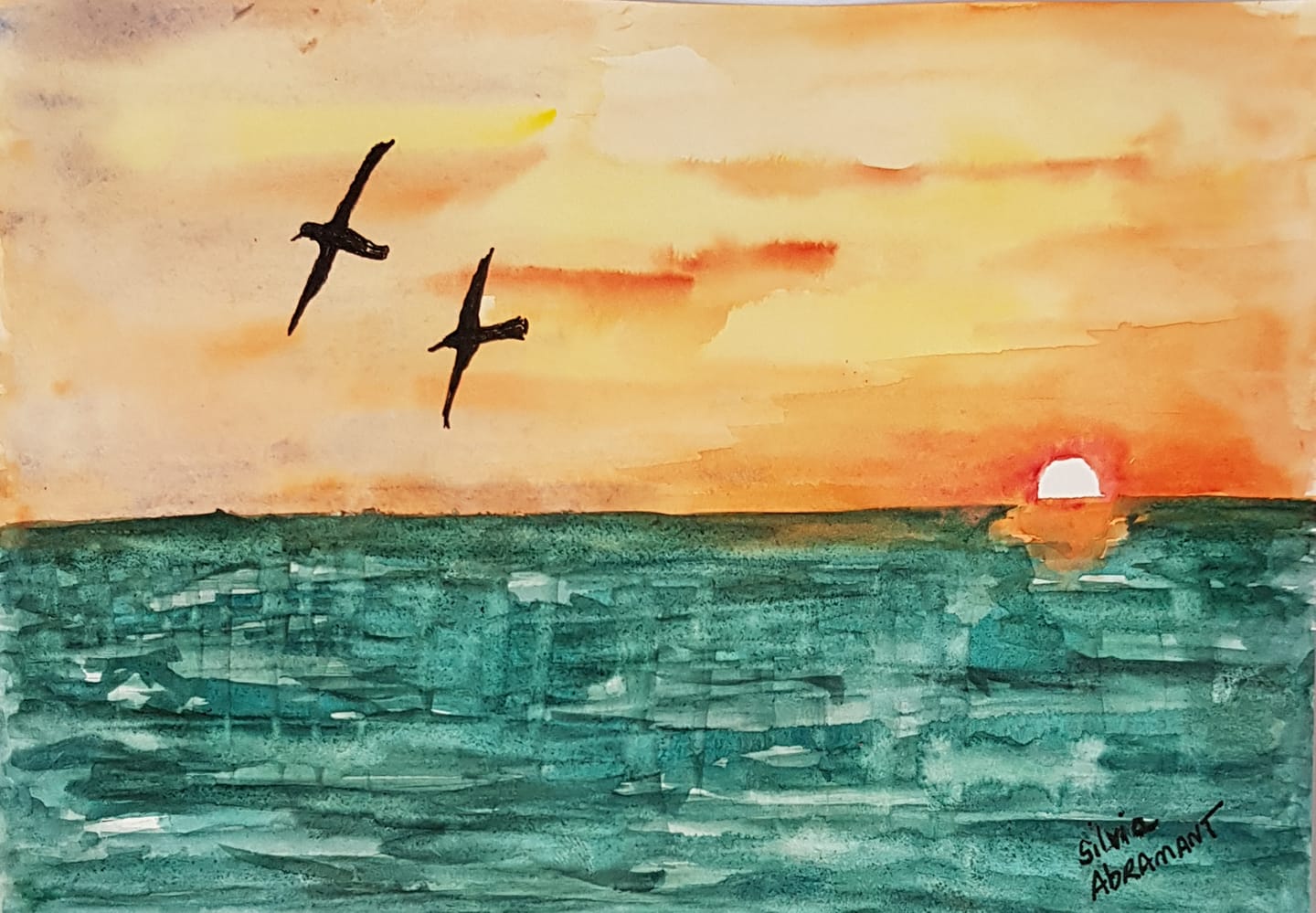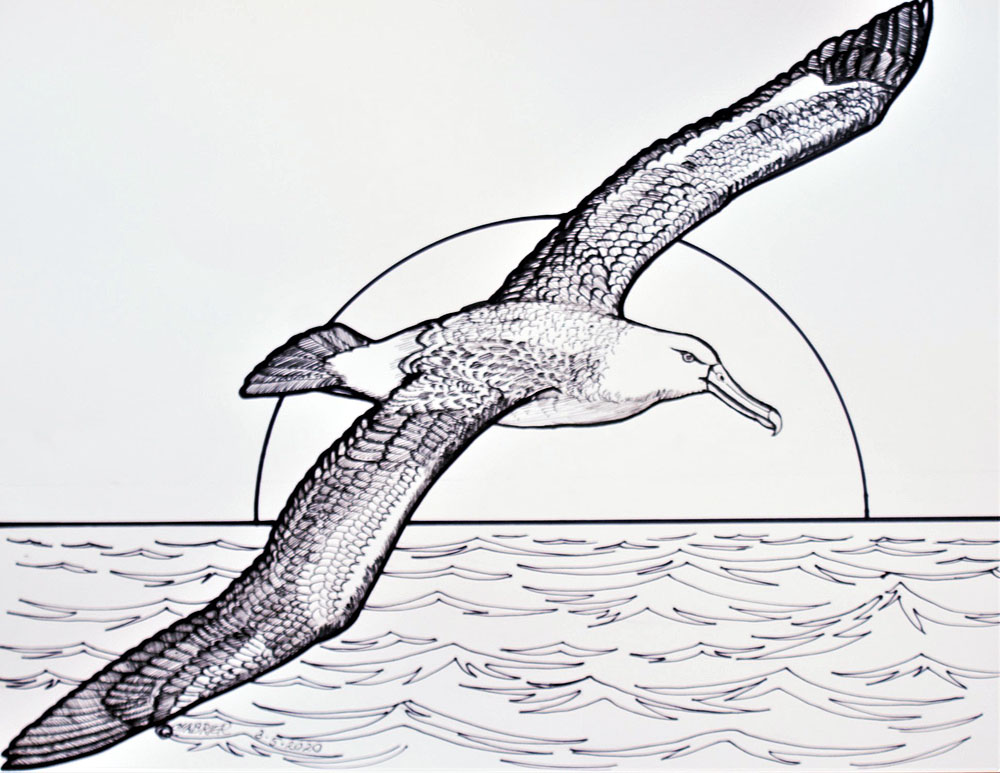
Drone view of a Black-browed Albatross colony on Steeple Jason Island in the South Atlantic, photograph from Sarah Crofts
Madeline Hayes (University Marine Laboratory, Beaufort, North Carolina, USA) and colleagues have published in the journal Ornithological Applications on counting breeding Black-browed Albatrosses Thalassarche melanophris from drone imagery.
The paper’s abstract follows:
“Population monitoring of colonial seabirds is often complicated by the large size of colonies, remote locations, and close inter- and intra-species aggregation. While drones have been successfully used to monitor large inaccessible colonies, the vast amount of imagery collected introduces a data analysis bottleneck. Convolutional neural networks (CNN) are evolving as a prominent means for object detection and can be applied to drone imagery for population monitoring. In this study, we explored the use of these technologies to increase capabilities for seabird monitoring by using CNNs to detect and enumerate Black-browed Albatrosses (Thalassarche melanophris) and Southern Rockhopper Penguins (Eudyptes c. chrysocome) at one of their largest breeding colonies, the Falkland (Malvinas) Islands. Our results showed that these techniques have great potential for seabird monitoring at significant and spatially complex colonies, producing accuracies of correctly detecting and counting birds at 97.66% (Black-browed Albatrosses) and 87.16% (Southern Rockhopper Penguins), with 90% of automated counts being within 5% of manual counts from imagery. The results of this study indicate CNN methods are a viable population assessment tool, providing opportunities to reduce manual labor, cost, and human error.”
Resumen: El monitoreo de las poblaciones de aves marinas coloniales es usualmente complicado por el gran tamaño de las colonias, los lugares remotos y la agregación densa inter- e intra-específica. Mientras que los drones han sido usados exitosamente para monitorear grandes colonias inaccesibles, la gran cantidad de imágenes colectadas introduce un cuello de botella en el análisis de los datos. Las redes neuronales convolucionales (RNC) están evolucionando como un medio prominente para la detección de objetos y pueden ser aplicadas a las imágenes de drones para el monitoreo poblacional. En este estudio, exploramos el uso de estas tecnologías para aumentar la capacidad de monitoreo de las aves silvestres mediante el uso de RNC para detectar y contar a Thalassarche melanophris y Eudyptes c. chrysocome en una de sus colonias de cría más grandes, las Islas Malvinas. Nuestros resultados mostraron que estas técnicas tienen gran potencial para el monitoreo de aves marinas en colonias significativas y espacialmente complejas, produciendo precisiones para detectar y contar correctamente las aves en un 97.66% (T. melanophris) y 87.16% (E. c. chrysocome), con un 90% de los conteos automáticos estando dentro del 5% de los conteos manuales realizados a partir de las imágenes. Los resultados de este estudio indican que los métodos de RNC son una herramienta viable de evaluación poblacional, brindando oportunidades para reducir el trabajo manual, el costo y el error humano.
Reference:
Hayes, M.C., Gray, P.C., Harris, G., Sedgwick, W.C., Crawford, V.D., Chazal, N., Crofts, S. & Johnston, D.W. 2021. Drones and deep learning produce accurate and efficient monitoring of large-scale seabird colonies. Ornithological Applications doi.org/10.1093/ornithapp/duab022.
John Cooper, ACAP Information Officer, 05 June 2021


 English
English  Français
Français  Español
Español 


